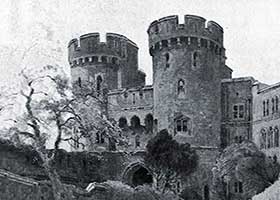 |
Medieval Code of Chivalry |
| Medieval Code of Chivalry
Medieval Code of Chivalry | |||
| Picture of a Medieval Castle |
| The Medieval Code of Chivalry There was not an authentic Medieval Code of Chivalry as such - it was a moral system which went beyond rules of combat and introduced the concept of Chivalrous conduct - qualities idealized by knighthood, such as bravery, courtesy, honor, and gallantry toward women. The Medieval Code of Chivalry was understood by all but a Code of Chivalry was documented in 'The Song of Roland' in the early Medieval period of William the Conqueror. |
The 'Song of Roland' describes the 8th century Knights and battles of the Emperor Charlemagne and has been described as Charlemagne's Code of Chivalry. The idea of the Code of Chivalry were emphasised by the oaths that were sworn in Knighthood ceremonies. These sacred oaths were combined with the ideals of chivalry and with strict rules of etiquette and conduct. The idea and ideals of a Medieval Code of Chivalry was publicised in the poems, ballads, writings and literary works of Medieval authors. The myths of Arthurian Legends featuring King Arthur, Camelot and the Knights of the Round Table further strengthen the idea of a Medieval Code of Chivalry. The Arthurian legend revolves around the Code of Chivalry followed by the Knights of the Round Table - Honour, Honesty, Valour and Loyalty. Medieval Code of Chivalry - the Oaths made during the Knighthood Ceremony
The Public ceremony of Knighthood followed a deeply religious ceremony with blessings from the Church to go forward and protect the church by the use of arms. Medieval Code of Chivalry - the Crusades The Song of Roland - Charlemagne's Code of Chivalry To fear God and maintain His Church |
Medieval Code of Chivalry - the Rules of Courtly Love I. Marriage is no real excuse for not loving. Medieval Code of Chivalry |
Medieval Code of Chivalry | |||
Medieval Code of Chivalry
Medieval Knights |
| © March 2018 SiteSeen Ltd. | Cookies Policy | Privacy Statement | By Linda Alchin | ||
